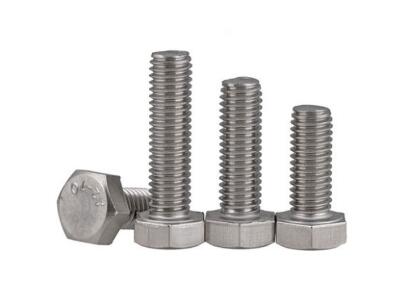Decoding Bolt Sizes: Understanding the Labels on Fasteners
2023-11-28
Introduction:
Bolts are the unsung heroes that hold our world together, quite literally. From construction sites to household repairs, these threaded fasteners play a pivotal role in keeping structures and objects intact. However, the world of bolts can be a bit perplexing, especially when it comes to understanding their sizes. In this blog, we'll unravel the mystery behind how bolt sizes are designated and labeled, offering clarity for both DIY enthusiasts and professionals alike.
Understanding Bolt Sizes:
When it comes to bolts, size matters, and understanding their dimensions is crucial for selecting the right fastener for the job. The designation of bolt sizes involves several key parameters, and the labeling convention may vary slightly depending on the region and standardization system in use.
1. Diameter:
The diameter of a bolt is one of its defining characteristics. It is typically denoted by the letter "M" followed by a number. For example, an M8 bolt has a diameter of 8 millimeters. In the imperial system, the diameter is often expressed in inches (e.g., 1/4 inch, 1/2 inch).
2. Thread Pitch:
The thread pitch refers to the distance between the threads on the bolt. It is specified in millimeters or threads per inch (TPI). For instance, an M8 bolt with a thread pitch of 1.25 means there is a 1.25-millimeter gap between each thread. In the imperial system, TPI is used, indicating the number of threads within one inch.
3. Length:
The length of a bolt is measured from the underside of the bolt head to the tip of the threaded end. It is usually expressed in millimeters or inches, depending on the measurement system being used. For example, an M8x30 bolt is 30 millimeters long.
4. Strength Grade:
Bolts are often classified by their strength grades, indicating their tensile strength. Common grades include 4.6, 8.8, 10.9, and 12.9, with the number representing the tensile strength in megapascals (MPa). Higher-grade bolts are generally capable of withstanding greater loads and forces.
5. Material Specification:
Bolt labels may also include information about the material from which they are made. Common materials include carbon steel, stainless steel, and alloy steel. The material specification is crucial for determining the bolt's corrosion resistance and overall durability.
Example:
- M8x30 - This designation indicates a metric bolt with an 8mm diameter, 1.25mm thread pitch, and a length of 30mm.
Conclusion:
Deciphering bolt sizes doesn't have to be a daunting task. By understanding the key parameters involved in the designation and labeling of bolts, you can confidently navigate the world of fasteners and select the right bolt for your specific needs. Whether you're embarking on a DIY project or working in a professional setting, knowing how to interpret bolt sizes ensures that your connections are secure, reliable, and built to last. So, the next time you pick up a bolt, remember that there's more to it than meets the eye – it's a carefully labeled and precisely engineered component ready to tackle the challenges of holding things together.



